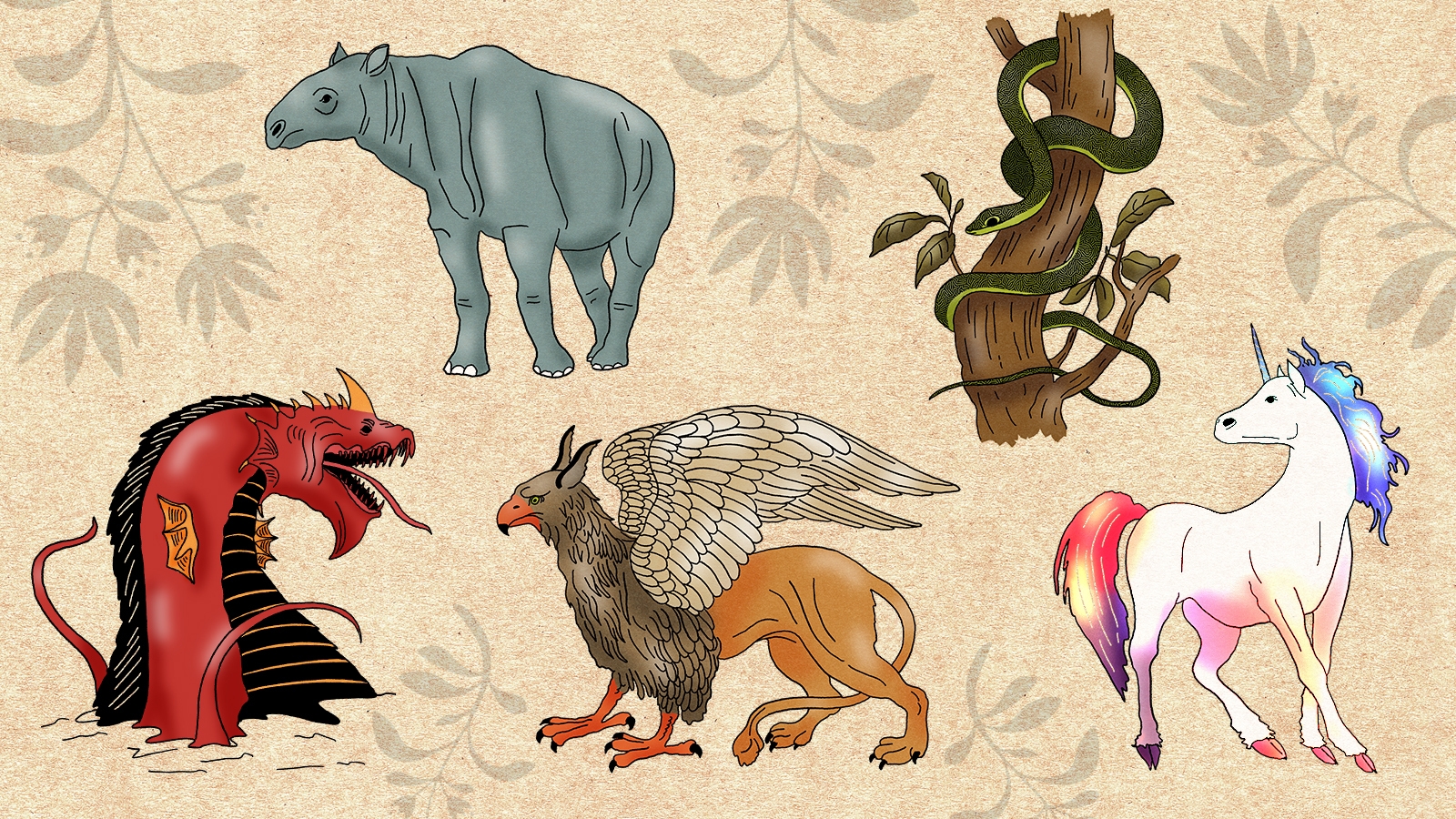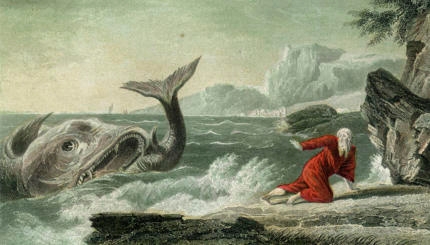The Hebrew Bible is full of animals — from the full roster of species that God created on the fifth and sixth days of creation to the long lists of kosher and non-kosher animals outlined in Leviticus.
Most of these, from the ant to the lion, are recognizable to this day. But there are some exceptional animals that have mythic proportions and special powers. You won’t encounter these animals in the wild or at the zoo. Here are seven mythical animals found in the Hebrew Bible:
1. Talking Snake (Genesis 3)
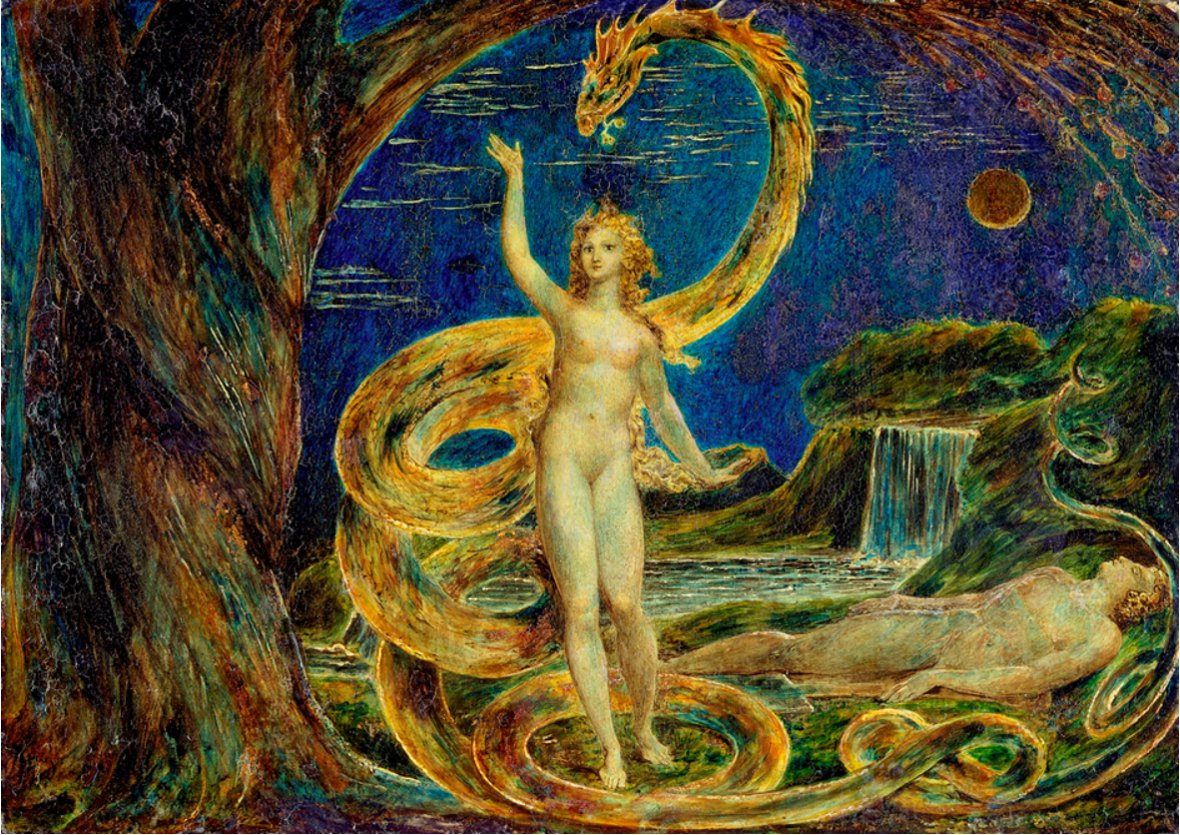
In the opening chapters of Genesis, God creates the world and places Adam and Eve in the Garden of Eden, where they are instructed not to eat from the Tree of Knowledge. But the serpent, who is able to speak and is characterized in the text as “wiley,” convinces Eve to ignore God’s warning and taste the forbidden fruit. She shares the fruit with Adam and both of them are expelled from paradise. But the serpent is also punished. God removes its legs and condemns it to spend the rest of its life crawling on its belly. There are many other serpents in the Hebrew Bible, from the ones that bite the Israelites in the desert to the ones formed from Moses and Aaron’s shape-shifting staffs, but as far as we know, this is the only snake that was ever able to speak.
2. Balaam’s Donkey (Numbers 22)
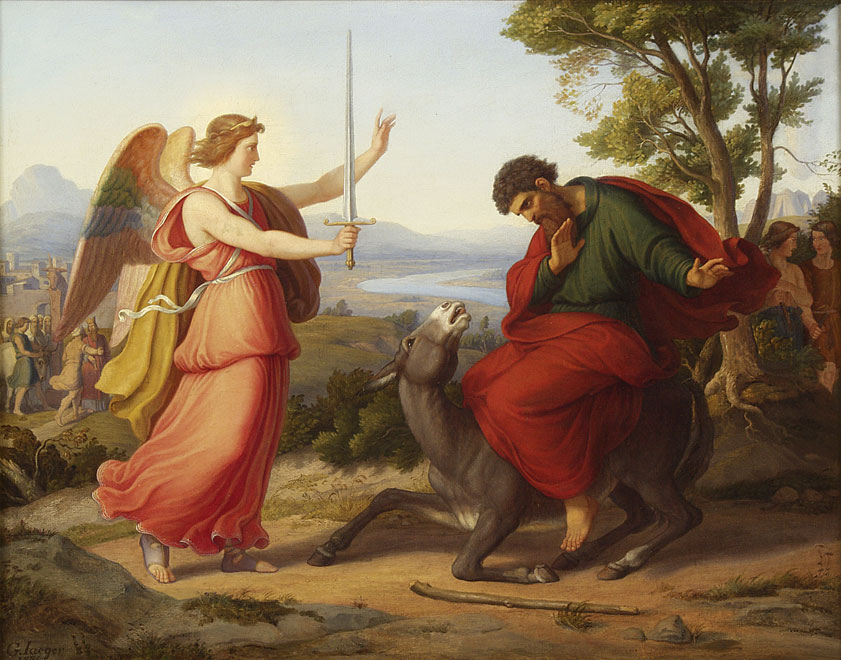
The only other animal in the Bible that is granted the power of speech is the donkey belonging to the non-Jewish prophet Balaam. In the Book of Numbers, the Moabite king Balak sees the many Israelites amassed in the desert and becomes afraid they will attack and overwhelm his people, so he sends the prophet Balaam to curse them. But Balaam warns Balak that he will be unable to curse the Israelites if God doesn’t want him to. Indeed, as Balaam rides off to curse the people, God places a fiery angel to block the path. Balaam’s donkey is able to see the angel, but Balaam can’t, so he urges her forward to no avail. When she finally lies down in the middle of the road, he curses and beats her, at which point God “opens” her mouth: “What have I done to you that you have beaten me these three times?” The donkey then points out to Balaam that she has always served him well, and once this has been established he is finally able to see the angel. Not only can this donkey talk, she is more wise and perceptive than her prophetic master.

Help us keep Jewish knowledge accessible to millions of people around the world.
Your donation to My Jewish Learning fuels endless journeys of Jewish discovery. With your help, My Jewish Learning can continue to provide nonstop opportunities for learning, connection and growth.
3. Behemoth (Job 40)
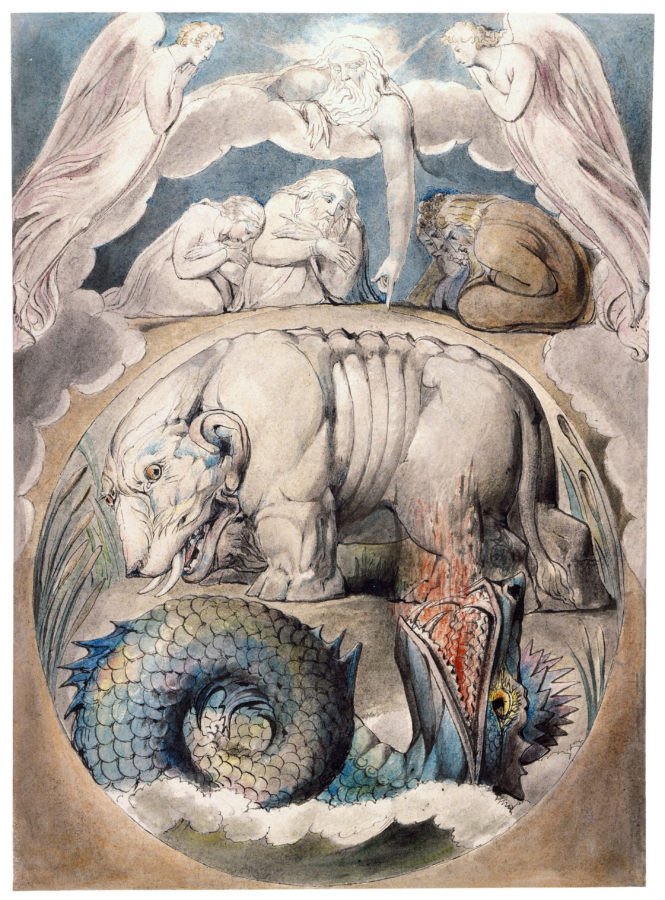
The Behemoth is a primeval chaos monster mentioned in the biblical Book of Job. In a speech delivered to Job at the end of the book, God explains that creating the world involved taming this oversized monster. Its name in Hebrew, behemot, is a pluralization of the Hebrew word for beast, behemah. A key feature of the Behemoth is that it is too large and ferocious for human beings to tame — only God is able to do it. Later Jewish interpretations hold that it was male and lived on land, as opposed to its counterpart, the female sea creature Leviathan.
4. Leviathan (Isaiah 27, Psalms 74, Job 41)
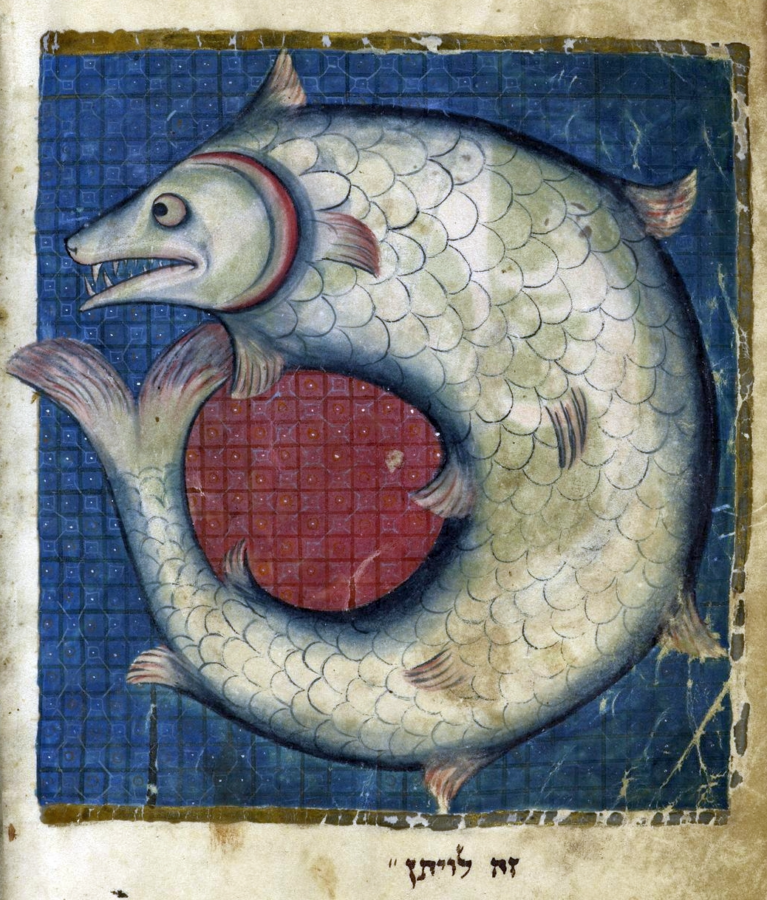
Also described in the Book of Job, the Leviathan is another primordial monster of mythic size and strength. The Leviathan is aquatic, and outside of Job it is also mentioned in Isaiah and Psalms. In Isaiah, we learn that Leviathan has serpent-like qualities and in Job we learn that it has scales and can breathe fire. All of this amounts to an underwater creature that is somewhat dragon-like.
Various Jewish midrashim suggest that the Leviathan and Behemoth will engage in an epic battle at the end of time, and that the righteous will ultimately feast on their flesh. There is another midrash that says originally two Leviathans were created, one male and one female, but God slew the female so they would not multiply and dominate the world. According to this legend, the lone male Leviathan continues to lurk in the depths of the ocean.
5. Ziz (Psalms 50 and 80)
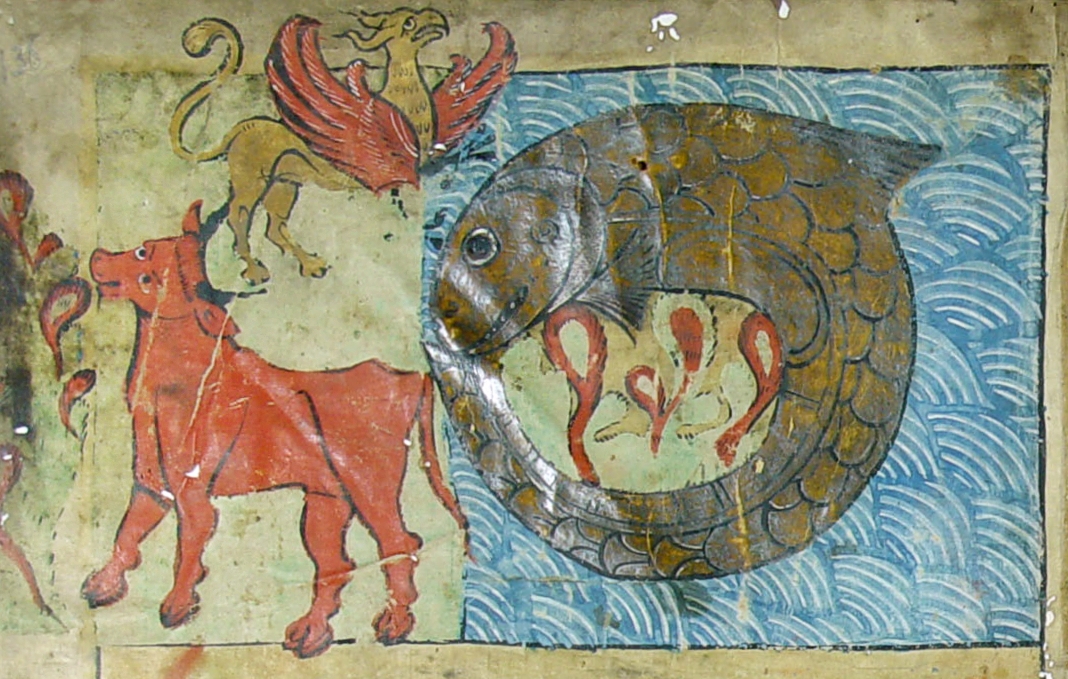
As the Behemoth is a land creature of mythical proportions and its counterpart, the Leviathan, rules the sea, there is also speculation that the ziz, mentioned twice in the psalms, was a singular bird so large its wingspan could block out the sun. According to Jewish legend, the egg of the ziz once broke and its fluids flooded 60 cities.
6. Man-Eating Fish (Jonah 2)
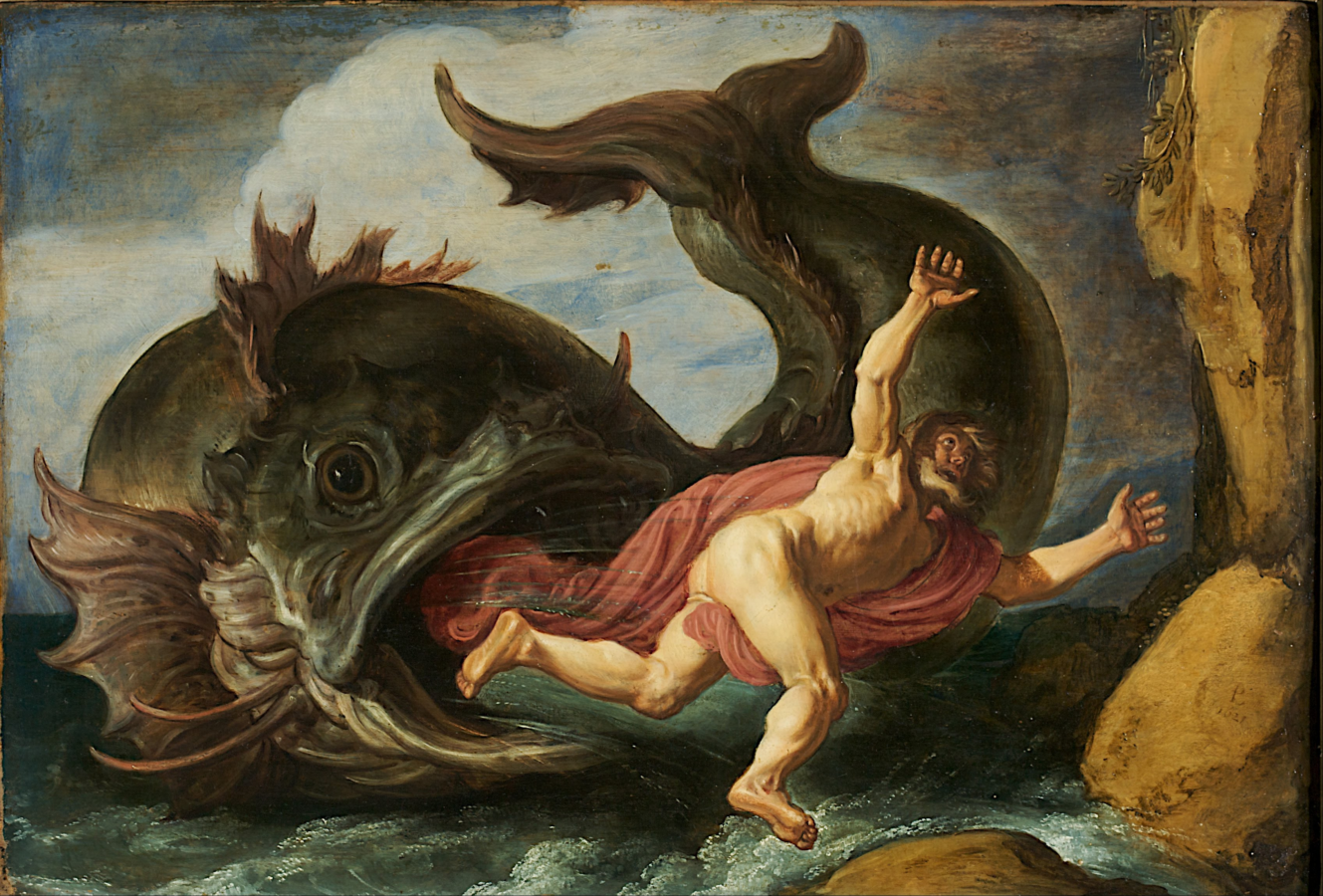
In the Book of Jonah, read in synagogue on Yom Kippur, the prophet is charged with going to Nineveh to tell the wicked people there to stop sinning, but Jonah instead runs away on a boat bound for Tarshish. When Jonah’s boat is threatened by a storm, he knows God is after him and tells the sailors they must throw him overboard. But God doesn’t let Jonah sink to the bottom of the sea. Instead, Jonah is swallowed by a large fish and then dwells for three days inside its belly, until the fish spits him back onto land, whole and undigested. According to the midrash, this remarkable fish narrowly escaped being swallowed by the Leviathan, which gobbles up whales and other large sea creatures.
7. Rainbow Unicorn (Numbers 4)
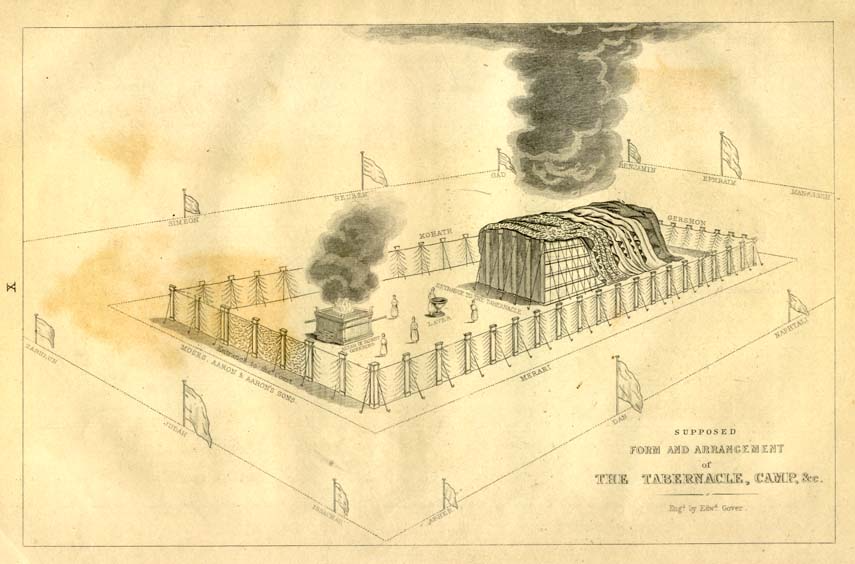
Numbers 4:25 describes a covering of animal skins made to drape over the mishkan, the portable sanctuary that the Israelites built for the duration of their wandering in the wilderness: “They shall bear the curtains of the Tabernacle, and the Tent of Meeting, its covering, and the covering of tahash that is upon it.” The word tahash refers to a creature, but no one is quite sure what it is. Some translations suggest that it is a dolphin or seal. The Talmud has another idea:
Rabbi Ela said that Rabbi Shimon ben Lakish said that Rabbi Meir used to say: The tahash that existed in the days of Moses was a creature unto itself … And it had a single horn on its forehead, and this tahash happened to come to Moses for the moment while the Tabernacle was being built, and he made the covering for the Tabernacle from it. And from then on, the tahash was suppressed and is no longer found. (Shabbat 28b)
The rabbis also say that the tahash had multicolored skin. One horn, skin of many colors, and it was never seen again? Sure sounds like a rainbow unicorn.
